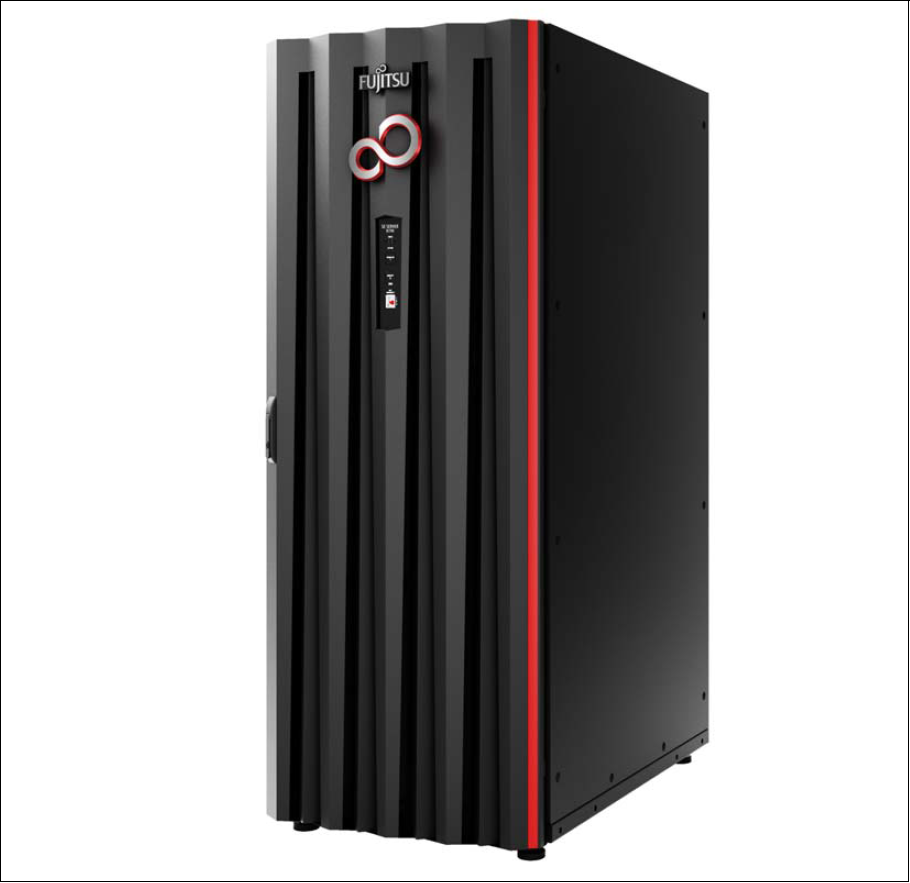The FUJITSU Server BS2000 SE Series unites the existing server lines S servers and SQ servers in the server line SE servers.
Depending on requirements, the SE server contains all the system components needed for operation as an overall application:
SU /390 for BS2000 guest systems
Server Unit x86 with BS2000, Linux or Windows guest systems
Application Units x86 for operating Native or hypervisor systems (e.g. Linux, Windows, VMware, OVM, etc.)
Shareable tape and disk periphery
A high-speed, server-internal infrastructure to connect the components with each other and with the customer's IP or FC network.
The SE server is installed entirely and tested on the vendor’s premises in accordance with customer specifications.
Many hardware components are redundant in design, thus ensuring that even if a fault occurs with these components, operation can continue with the same performance.
You can easily upgrade the models on site.
Information on the hardware lifecycle of the FUJITSU Server BS2000 SE Series (Changes since the last edition of the manual)
With the hardware lifecycle of the SE Series, the hardware basis for the Server Unit x86, the Management Unit and the HNC has been renewed. These new generation versions are called SU300 M2, MU M2 and HNC M2. They are supported from basic software V6.2A onwards.
The FUJITSU BS2000 servers of the SE Series that are equipped with this hardware generation are called SE300B, SE500B and SE700B.
The changes in the manuals are mainly due to these new hardware lifecycle generation models. Any differences to the previous models regarding structure and operation are described in detail.
Names and abbreviations
Because the names are used frequently, for the sake of simplicity and clarity the following abbreviations are employed:
SE server for the FUJITSU Server BS2000 SE Series (Server Units /390 and x86) with the following models:
SE700 for FUJITSU Server BS2000 SE700 / SE700B
(with SU700, more than one SU300 and AU optional)SE500 for FUJITSU Server BS2000 SE500 / SE500B
(with SU500, more than one SU300 and AU optional)SE300 for FUJITSU Server BS2000 SE300 / SE300B
(with SU300, more than one SU300 and AU optional)
Based on the different models, a distinction is made between the following SUs:SU700 for the Server Unit of the unit type SU /390 in SE700 and SE700B
SU500 for the Server Unit of the unit type SU /390 in SE500 and SE500B
SU300 for the Server Unit of the unit type SU x86 in SE300, optionally in SE500 / SE700
Both SU300 M1 and SU300 M2 are described in the operating manual.
MU for the Management Unit. The MU enables centralized, user-friendly and cross-system management on the SE server.
Both MU M1 and MU M2 are described in the operating manual.AU for the Application Unit (on a varying hardware base)
The names of the models are derived from the hardware bases. AU47 is, for example, an Application Unit based on a PRIMERGY RX4770.HNC (High Speed Net Connect)
The HNC connects the Server Unit /390 to the LAN and as the net client enables the BS2000 systems on the SU /390 to access the Net-Storage.
Both HNC M1 and HNC M2 are described in the operating manual.
HNC is also the name used for the basic HNC software.
For a description of the further features of the SE servers SE700, SE500 and SE300, please refer to the chapter "System overview".
Figure 1: SE Server SE700 and SE700B

